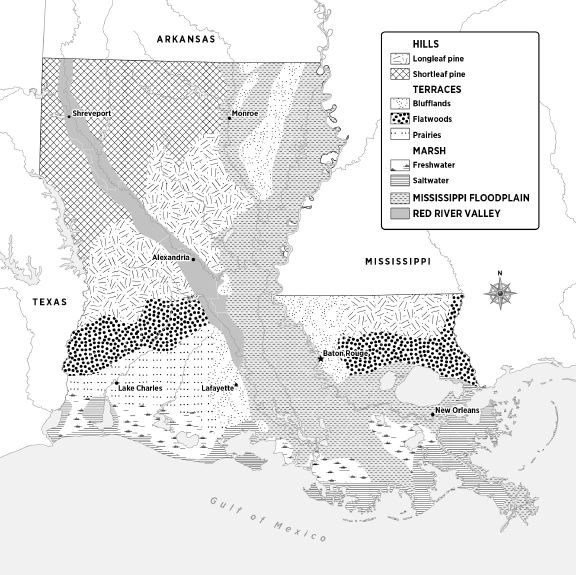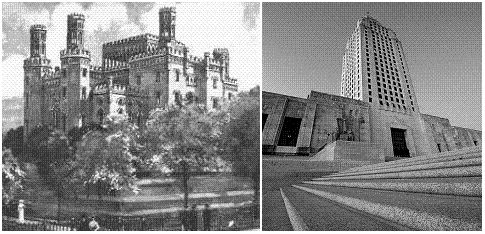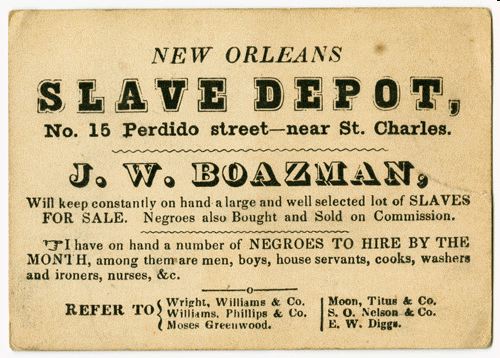Multiple Choice
Identify the
choice that best completes the statement or answers the question.
|
|
|
1.
|
Which group of immigrants came to Louisiana after a
series of potato famines in their home country?
a. | Germans | b. | Irish | c. | Italians | d. | Russians |
|
|
|
2.
|
Which explains why the Know Nothing Party opposed
immigration?
a. | They believed the immigrants would join the Democratic
party. | b. | They feared the immigrants would bring changes to the
country. | c. | They believed immigrants could easily be influenced by
politicians. | d. | They blamed the
immigrants for the unemployment of American workers. |
|
|
|
3.
|
Which political party was supported by sugar
planters?
a. | Democratic | b. | Know Nothing | c. | Republican | d. | Whig |
|
|
|
4.
|
Which statement best describes Louisiana’s
population between 1820 and 1860?
a. | Louisiana’s population
decreased. | b. | Louisiana’s
population became less diverse. | c. | Louisiana’s
population remained unchanged. | d. | Louisiana’s
population became more diverse. |
|
|
|
5.
|
How did Louisiana’s economy change during the
period from 1820 to 1860?
a. | The economy crashed. | b. | The economy grew at astounding rates. | c. | The economy moved away from slave labor. | d. | The economy continued to struggle as it had in the colonial
era. |
|
|
|
6.
|
Louisiana volunteers helping to free Texas from
Mexico helped the United States achieve which goal?
a. | abolition of slavery | b. | autocratic rule | c. | immigration
control | d. | manifest destiny |
|
|
|
7.
|
What is manifest destiny?
a. | The plan to make the United States the center of the
global economy. | b. | The plan to make
the United States’ military the most powerful in the world. | c. | The belief that the president of the United States was the most powerful man
in the world. | d. | The belief that
the territorial expansion of the United States was not only inevitable but divinely
ordained. |
|
|
|
Study the event list and then answer the question. 
|
|
|
8.
|
In which year were there focused efforts to improve
the infrastructure of Louisiana?
|
|
|
9.
|
Which explains the relationship between the events
of 1845 and 1852?
a. | They represent a compromise over issues regarding
slavery in the state of Louisiana. | b. | They reflect
Louisiana’s practice of changing the Constitution after each gubernatorial
election. | c. | The citizens of Louisiana wanted more rights to be
guaranteed by the state’s Constitution. | d. | They reflect the
tense competition among political parties and between New Orleans and the rest of the
state. |
|
|
|
10.
|
Which two ethnic groups were the leading
competitors for political power in Louisiana during the antebellum period?
a. | American and French | b. | Spanish and Cajun | c. | Creole and
American | d. | Spanish and
French |
|
|
|
11.
|
Which describes the group known as the
“foreign French”?
a. | Acadian immigrants beginning in the
1820s | b. | immigrants from France beginning in the
1820s | c. | Acadian immigrants before the American
Revolution | d. | immigrants from
France before the French and Indian War |
|
|
|
12.
|
Who is credited with being one of Louisiana’s
most effective antebellum governors?
a. | André Bienvenue Roman | b. | Andrew Jackson | c. | Thomas
Robertson | d. | Zachary Taylor |
|
|
|
13.
|
What could be said about the work of André
Bienvenu Roman as Governor of Louisiana?
a. | He improved Louisiana’s
infrastructure. | b. | He improved
Louisiana’s foreign trade relationships. | c. | He is credited
with ending the Creole-American political rivalry. | d. | He is credited with encouraging economic growth by reducing lending
restrictions. |
|
|
|
14.
|
Louisiana Regions
 In which regions is Baton Rouge located? In which regions is Baton Rouge located?
a. | Marsh and Terraces | b. | Mississippi Floodplain and Marsh | c. | Terraces and Hills | d. | Terraces and
Mississippi Floodplain |
|
|
|
15.
|
Use the images to answer the next question.  How are the buildings in the photographs related? How are the buildings in the photographs related?a. | They are both capitol buildings located in New Orleans
that are no longer standing. | b. | One was the
Spanish Governor’s mansion, and the other is the current capitol
building. | c. | One was the pre-war capitol building in Baton Rouge, and
the other is the current capitol in Baton Rouge. | d. | One is the old capitol building in New Orleans, and the other is the current
capitol building in Baton Rouge. |
|
|
|
Immigrant Population of
New Orleans, 1860 | Persons | Number | Percent | | Total Population | 168,675 | 100% | | African
American | 24,074 | 14% | Slaves
Free Persons of Color | 13,385
10,689 | 8%
6% | | European
Americans | 144,601 | 86% | Native
Born
Immigrants | 78,333
66,268 | 46%
39% | Irish
Germans
French
British
Spanish
Italian
Other Immigrants | 24,398
19,675
10,564
3,849
1,390
1,019
5,373 | 14%
12%
6%
2%
1%
1%
3% | | | |
|
|
|
16.
|
Which conclusion can be drawn from the
table?
a. | By 1860, it was illegal to own slaves in the city of New
Orleans. | b. | By 1860, the population of New Orleans had become very
diverse. | c. | Efforts by colonial leadership to attract new settlers
had been largely unsuccessful. | d. | The population of
New Orleans had remained largely the same since its colonial
period. |
|
|
|
17.
|
Which is a logical outcome based on the data in the
table?
a. | New Orleans would be a city that was easy to police and
govern. | b. | In an election, the population of New Orleans would vote
for only one political party. | c. | Ethnic groups
would abandon their cultural heritage in favor of forming a New Orleans
culture. | d. | Governing New Orleans would prove to be difficult due to
the varied interests of the diverse population. |
|
|
|
18.
|
Which was a result of ethnic tensions in New
Orleans during the antebellum period?
a. | Creoles left the city and relocated to Baton
Rouge. | b. | New Orleans stopped allowing immigrants to settle in the
city. | c. | The French Quarter became a city independent of New
Orleans. | d. | Governance was split and separate districts were formed
within the city. |
|
|
|
19.
|
What is universal manhood
suffrage?
a. | granting voting privileges to all
men | b. | granting voting privileges to all free white
men | c. | granting voting privileges to all men and
women | d. | granting voting privileges to all free white men and
women |
|
|
|
20.
|
Which describes the core beliefs of the Democratic
party as it emerged in the antebellum period?
a. | big government, big business, and an elite voting
population | b. | small government,
big business, and a large voting population | c. | big government,
small business, and an elite voting population | d. | small government,
small business, and a large voting population |
|
|
|
21.
|
Which political party emerged to oppose the
Democratic party during the antebellum period?
a. | Democratic Republicans | b. | Jacksonian Democrats | c. | Libertarians | d. | Whigs |
|
|
|
22.
|
Which describes the core beliefs of the Whig party
as it emerged during the antebellum period?
a. | business, banking, and
infrastructure | b. | business, banking,
and small government | c. | banking, common
man, and small government | d. | common man, small
government, and a large voting population |
|
|
|
23.
|
What are protective tariffs?
a. | taxes placed on trade goods | b. | taxes placed on imported goods | c. | taxes placed on exported goods | d. | taxes placed on locally produced goods |
|
|
|
24.
|
What effect do protective tariffs generally have on
the price of goods?
a. | They raise the price at which exported goods are sold to
other nations. | b. | They raise the
price of imported goods above those same goods produced in the United
States. | c. | They raise the price of goods sold in the United States
above the price that they are sold to other nations. | d. | They raise the price of goods produced in the United States above those same
goods imported from other nations. |
|
|
|
25.
|
What were the head and master
statutes?
a. | laws about who can vote | b. | laws about the treatment of slaves | c. | laws about running a boarding school | d. | laws giving a husband control of his
wife |
|
|
|
26.
|
What was the name for a person who managed the sale
and distribution of a planter’s crops during the antebellum period?
a. | advisor | b. | broker | c. | distributor
| d. | factor |
|
|
|
27.
|
Which explains why Louisiana invested in railroad
development during the antebellum period?
a. | Railroads were safer and more reliable than water or
road travel. | b. | Using waterways to
transport goods was too dangerous and unpredictable. | c. | They hoped to connect to business centers in other states and create more
business opportunities for the state. | d. | Louisiana’s
waterways were overcrowded with steam boats, slowing the transportation time of
goods. |
|
|
|
28.
|
Which statement about cotton cultivation during the
antebellum period is true?
a. | It could only be grown on large
plantations. | b. | It required a
great financial investment to cultivate | c. | It was possible to
raise throughout the state on any size farm. | d. | It could only be
grown in the warmer southern parts of Louisiana. |
|
|
|
29.
|
 Based on this document,
what could be said about the role of slavery in Louisiana’s economy? Based on this document,
what could be said about the role of slavery in Louisiana’s economy?a. | Slaves benefited only those who ran large
plantations. | b. | Slaves were only
sold for the purpose of manual labor. | c. | Slave labor and
trade was profitable for farmers, renters, and dealers alike. | d. | Slave labor was specialized making it difficult to sell them to a variety of
consumers. |
|
|
|
30.
|
Which explains why the period between September and
April was considered slave selling season?
a. | Farms and plantations only operated during those
months. | b. | These were the cooler, less disease-prone months of the
year. | c. | Louisiana’s legislature had passed laws banning
sales at other times of the year. | d. | Boats could not
enter the frozen port during the winter to deliver and distribute
slaves. |
|